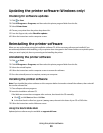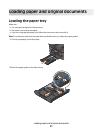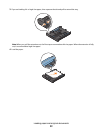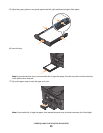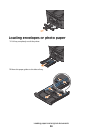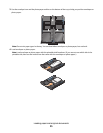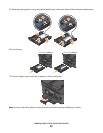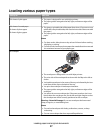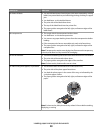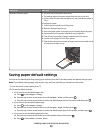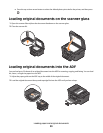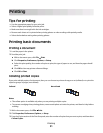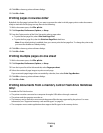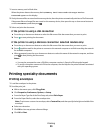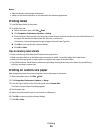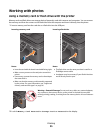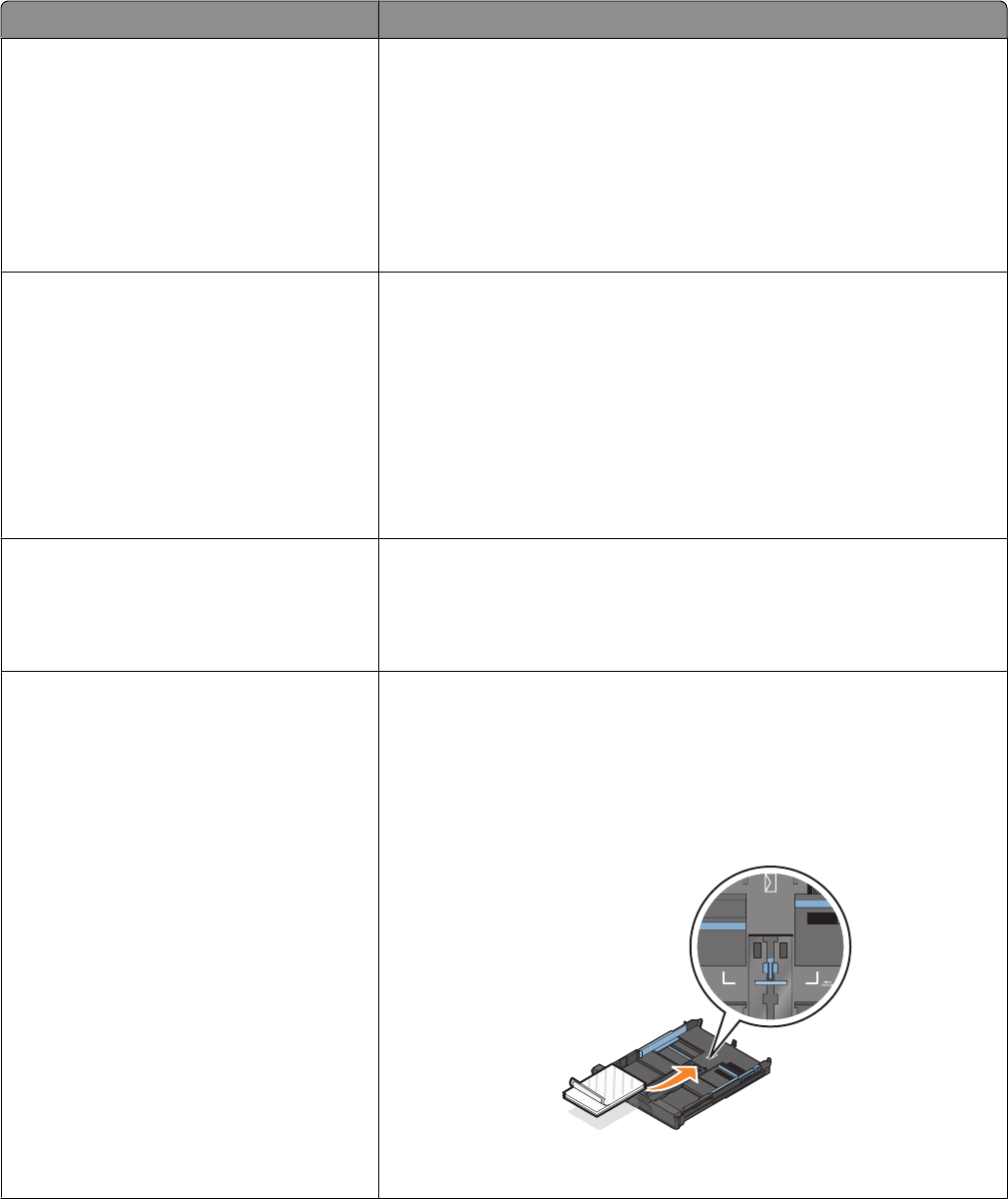
Load up to Make sure
25 sheets of labels
• You use full label sheets. Partial sheets (with areas exposed by missing
labels) may cause labels to peel off during printing, resulting in a paper
jam.
• You load letter- or A4-size label sheets.
• The print side of the labels faces down.
• The top of the labels feeds into the printer first.
• The paper guides rest against the left, right, and bottom edges of the
label sheets.
50 transparencies
• The rough side of the transparencies faces down.
• You load letter- or A4-size transparencies.
• You remove any paper backing sheets from the transparencies before
loading.
• If the transparencies have a removable strip, each strip faces down.
• The paper guides rest against the left, right, and bottom edges of the
transparencies.
Note: Transparencies require more drying time. Remove each transparency
as it exits, and allow it to dry to avoid ink smudging.
10 iron-on transfers
• You follow the loading instructions that came with the iron-on transfers.
• The print side of the transfers faces down.
• The paper guides rest against the edges of the transfers.
Note: For best results, load transfers one at a time.
25 index cards, photo papers, or postcards
• The thickness does not exceed 0.025 inches (0.635 mm).
• The print side of the photo paper faces down.
• You load the photo paper in the center of the tray, as indicated by the
4 x 6 photo paper outline.
• The paper guides rest against the left, right, and bottom edges of the
paper.
Note: For best results, allow photos to dry at least 24 hours before stacking,
displaying, or storing
Loading paper and original documents
28



